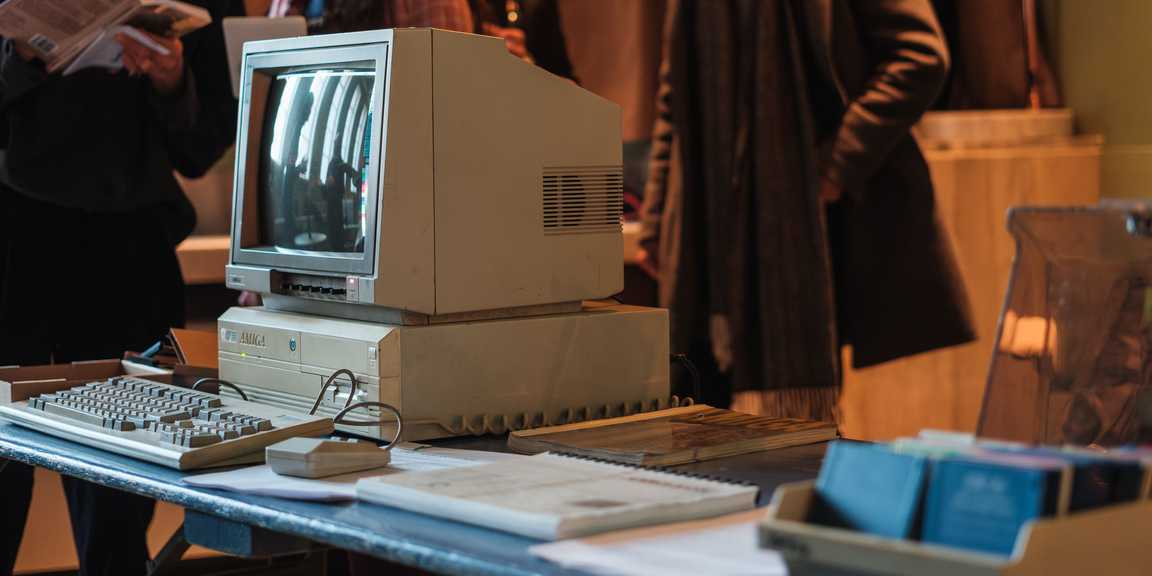What makes an Amiga artwork unique – and how can it be sustained for the future? This guide introduces key risks, preservation strategies, and findings from LI-MA’s AMIGA NU research, exploring the legacy of 1980s and ’90s Amiga-based art in the Netherlands and how to keep it accessible today.

How to Identify and Preserve an Amiga Artwork
Learn more about defining characteristics of Amiga artworks and how we can conserve them for the future
What is Amiga?
The Commodore Amiga computer quickly gained popularity with artists for its unique graphics and sound capabilities upon its release in 1985. The iconic Amiga fostered a do-it-yourself spirit and network between artists pioneering with the technology. Artworks from this time period represent the beginning of the digital age and the new artistic possibilities it encompassed. However, the lifespan of Amiga was cut short by Commodore’s bankruptcy in 1994. Even with its strong legacy and influence, the obsolescence of Amiga has posed significant challenges for identifying and preserving Amiga-based artworks.
What Puts an Amiga Artwork at Risk?
Amiga artworks are susceptible to different types of risks as they continue to age. One being that the Amiga is not heavily researched and documented in terms of art history, and many artworks made with the technology go unrecognised as such. These difficulties in being able to characterize an artwork as being made with Amiga can negatively impact archives and cultural institutions that wish to identify Amiga artworks in their collections. Moreover, the Amiga heavily relies on floppy disks to not only load software programs onto the computer, but also as a mechanism to store Amiga artworks. Unfortunately, reliance on this obsolete technology poses a hefty risk to the artwork.
So How Do We Identify and Preserve Amiga Artworks?
From October 2024 to April 2025, LI-MA undertook the AMIGA NU project: an in-depth investigation into the production and practice of computer-based art in the Netherlands during the 1980s and 1990s, with a particular focus on the Amiga computer. Funded by the Cultuurfonds, the project was led by Junior Conservator Olivia Brum under the supervision of LI-MA Director Gaby Wijers. The results of the are multi-faceted, encompassing archives, identification, preservation, presentation, and collaboration. Questions investigated during the project included:
- To what extent can or may these works change in order to allow the work to continue to exist?
- How can a work of art made with Amiga be preserved sustainably for the long term and be resented in a way that remains accessible to the public?
To learn more see below:
Header image: Transformation Digital Art 2025. Amiga Computer, Morgane Stricot, Matthieu Vlaminck Photo by Alex Heuvink.






